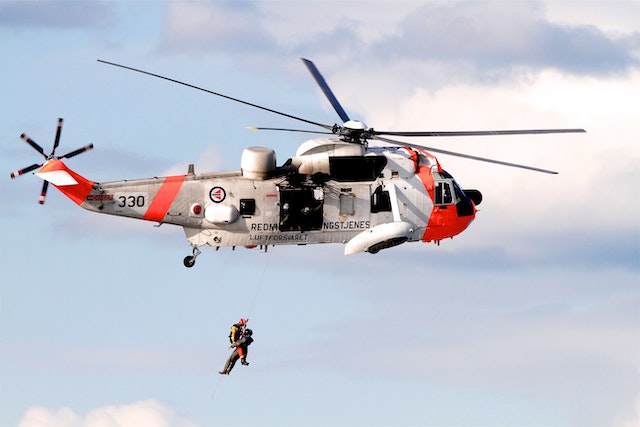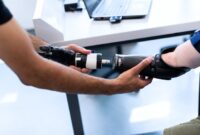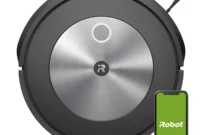Imagine a world where lives can be saved from above, where swift and efficient aid can be delivered to those in need, regardless of the challenging terrain or adverse conditions. This vision has become a reality with the advent of search and rescue drones. These unmanned aerial vehicles (UAVs) equipped with advanced technology are revolutionizing the field of search and rescue operations, significantly enhancing the chances of survival for those caught in emergencies. In this article, we will explore the incredible capabilities of search and rescue drones and their impact on saving lives.

Introduction
Search and rescue drones, also known as SAR drones, are unmanned aerial vehicles specifically designed to aid in locating and assisting individuals in emergency situations. They have rapidly gained recognition as indispensable tools in search and rescue operations due to their ability to access remote or hazardous areas, provide real-time surveillance, and deliver essential supplies. By leveraging cutting-edge technology, these drones are transforming the way emergency response teams conduct their missions.
Advantages of Search and Rescue Drones
Rapid Deployment and Reach
One of the most significant advantages of search and rescue drones is their rapid deployment and extensive reach. In emergency situations, time is of the essence, and the ability to respond quickly can be a matter of life and death. Search and rescue drones excel in this regard, as they can be deployed within minutes and cover vast areas in a fraction of the time it would take human rescuers. This speed enables a more efficient search process, increasing the chances of locating survivors and providing timely assistance.
Enhanced Surveillance and Detection
Equipped with state-of-the-art camera technology and advanced sensors, search and rescue drones offer enhanced surveillance and detection capabilities. High-resolution cameras allow for detailed aerial imaging, while thermal imaging technology can detect heat signatures, making it easier to locate individuals, even in low-light or obscured conditions. This advanced visual data aids rescuers in identifying survivors, assessing their condition, and planning appropriate rescue strategies.
Safety and Efficiency
Search and rescue operations are inherently risky for human responders. By utilizing drones, the safety of rescuers can be significantly enhanced. Drones can access hazardous or hard-to-reach areas, such as collapsed buildings or rough terrains, without exposing human lives to unnecessary danger. Moreover, the use of drones reduces the need for extensive manpower, making operations more cost-effective and efficient.
Applications of Search and Rescue Drones
Search and rescue drones have a wide range of applications across various emergency scenarios. Let’s explore some of the key areas where these drones are making a significant impact:
Natural Disasters
In the aftermath of natural disasters such as earthquakes, floods, or hurricanes, search and rescue efforts are crucial for locating survivors and assessing the extent of damage. Search and rescue drones prove invaluable in these situations by providing a bird’s-eye view of the affected areas, allowing rescuers to identify survivors, plan evacuation routes, and prioritize rescue operations. The ability to quickly survey large areas and access hard-to-reach locations makes drones a vital asset in disaster response.
Wilderness and Urban Search and Rescue
When individuals go missing in vast wilderness areas or urban environments, traditional search and rescue efforts can be challenging and time-consuming. Search and rescue drones equipped with advanced imaging technology and GPS tracking systems can quickly scan large areas, detect signs of human presence, and relay precise coordinates to rescue teams. These drones greatly improve the chances of finding missing persons and reduce search times, ultimately saving lives.
Medical Emergencies
Search and rescue drones are not only limited to locating and rescuing individuals in emergency situations but also play a crucial role in providing immediate medical aid. Drones equipped with payload delivery systems can transport medical supplies, such as defibrillators, medications, or emergency kits, to remote or inaccessible locations. This capability is especially valuable in scenarios where time is critical, such as in cardiac emergencies or areas with limited medical infrastructure.
Challenges and Limitations
While search and rescue drones offer remarkable advantages, they are not without challenges and limitations. Addressing these concerns is crucial for the widespread acceptance and effective deployment of these unmanned systems.
Regulatory and Legal Frameworks
The use of drones raises important regulatory and legal considerations. Privacy concerns are a common issue, as drones equipped with cameras can potentially infringe upon individuals’ privacy rights. Balancing the benefits of aerial surveillance with privacy protections is essential to ensure public acceptance and prevent misuse of the technology. Additionally, airspace regulations and integration with existing aviation systems need to be carefully addressed to ensure safe and efficient operation of search and rescue drones.
Technical Limitations
Search and rescue drones face several technical limitations that need to be overcome for optimal performance. Battery life and flight time pose significant challenges, as longer endurance would allow drones to operate for extended periods, increasing their effectiveness. Moreover, adverse weather conditions, such as strong winds, heavy rain, or low visibility, can limit the ability of drones to conduct search and rescue operations. Developing drones that can withstand harsh environmental conditions is crucial for their reliability and effectiveness.
Public Acceptance and Trust
Public perception plays a vital role in the successful implementation of search and rescue drones. Some individuals may perceive drones as an invasion of privacy or express concerns about the reliability and accuracy of these systems. It is essential to educate the public about the benefits of search and rescue drones, address their concerns transparently, and ensure the development of robust and trustworthy technologies. Building trust and fostering positive public perception will be key in maximizing the potential of these life-saving tools.
Future Developments and Innovations
The future of search and rescue drones holds great promise, with ongoing developments and innovations pushing the boundaries of their capabilities. Here are some areas of advancement to look forward to:
Artificial Intelligence and Machine Learning
Artificial intelligence and machine learning algorithms are transforming search and rescue drones into intelligent systems capable of autonomous decision-making. These advancements enable drones to analyze vast amounts of data, including live video feeds and sensor inputs, to identify and prioritize targets for rescue. Enhanced search algorithms can further optimize the search process, improving efficiency and accuracy.
Payload Capabilities
Developing advanced payload capabilities is crucial for expanding the applications of search and rescue drones. Payload delivery systems enable drones to transport essential supplies, medical equipment, or even survival kits directly to individuals in need. Integration of multi-sensor payloads, including thermal cameras, gas sensors, or high-resolution imaging systems, enhances the drones’ ability to gather critical data and provide real-time situational awareness to rescue teams.
Collaboration and Integration
Collaboration between search and rescue agencies, emergency responders, and drone manufacturers is essential for maximizing the effectiveness of these systems. Integration of search and rescue drones with existing emergency infrastructure, such as communication networks or emergency response protocols, enables seamless coordination and information sharing. This collaborative approach ensures a more comprehensive and efficient response to emergencies, ultimately saving more lives.
Conclusion
Search and rescue drones have emerged as powerful tools in emergency response, revolutionizing the way we save lives from above. With their rapid deployment, enhanced surveillance capabilities, and ability to access remote or hazardous areas, these drones have significantly improved search and rescue operations. However, addressing challenges such as regulatory frameworks, technical limitations, and public acceptance is crucial for the continued advancement and widespread adoption of this technology. By leveraging future developments in artificial intelligence, payload capabilities, and collaboration, we can unlock the full potential of search and rescue drones, saving more lives and making our communities safer.
FAQs
1. Can search and rescue drones operate in all weather conditions?
Search and rescue drones are designed to operate in various weather conditions. However, extreme weather conditions such as heavy rain, strong winds, or low visibility can affect their performance and limit their operations. Manufacturers are continually working to improve drone resilience and develop models that can withstand harsh environmental conditions.
2. Are search and rescue drones autonomous or remotely controlled?
Search and rescue drones can be both autonomous and remotely controlled, depending on the specific model and mission requirements. Some drones are designed to operate autonomously, using pre-programmed flight paths and intelligent algorithms to perform search and rescue tasks. Others can be remotely controlled by human operators who monitor the drone’s movements and control its functions in real-time.
3. How far can search and rescue drones travel?
The range of travel for search and rescue drones varies depending on the specific model and flight capabilities. Most drones used in search and rescue operations have a range of several kilometers, allowing them to cover significant distances during missions. Advanced battery technologies and efficient flight systems are continuously improving drone endurance, extending their range and operational capabilities.
4. Are there any privacy concerns associated with the use of search and rescue drones?
The use of search and rescue drones raises valid privacy concerns, particularly regarding the collection and use of visual data. To address these concerns, regulations and policies need to be in place to protect individuals’ privacy rights while enabling the effective use of drones in emergency situations. Anonymizing data, implementing strict data handling protocols, and ensuring transparency in drone operations can help mitigate privacy risks and build public trust.
5. What measures are being taken to ensure the reliability and accuracy of search and rescue drones?
Manufacturers and developers of search and rescue drones are constantly working to enhance their reliability and accuracy. Rigorous testing and quality control processes are implemented to ensure that drones meet industry standards and perform as intended. Regular maintenance, software updates, and training for operators also contribute to maintaining drone performance and accuracy. Continuous advancements in technology and lessons learned from real-world operations further drive improvements in the reliability and accuracy of search and rescue drones.


